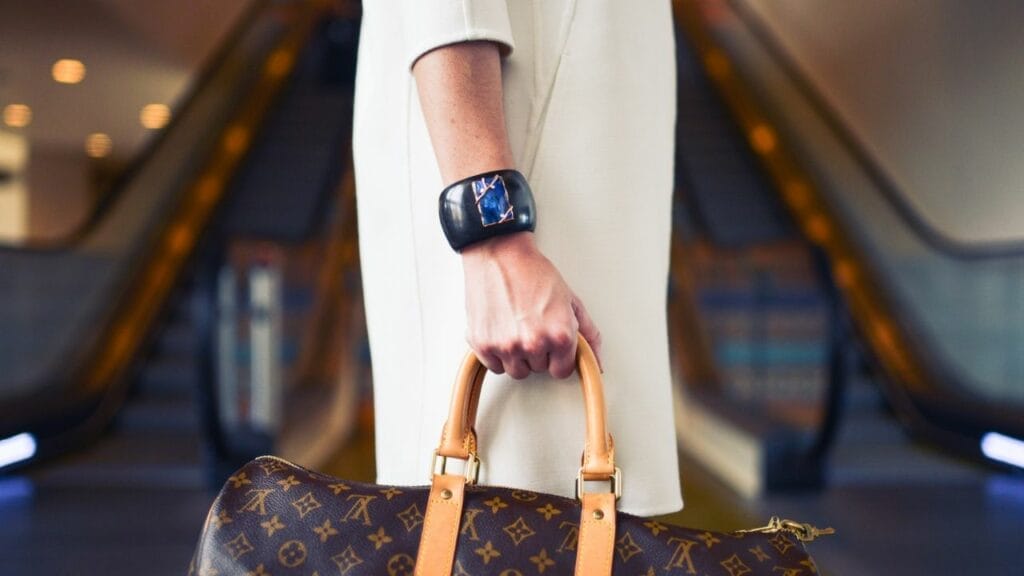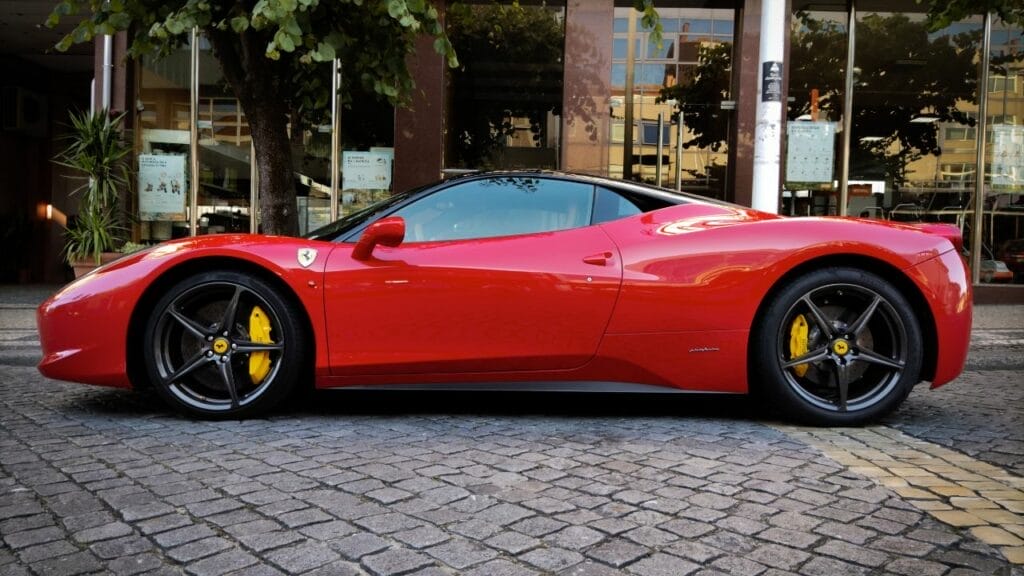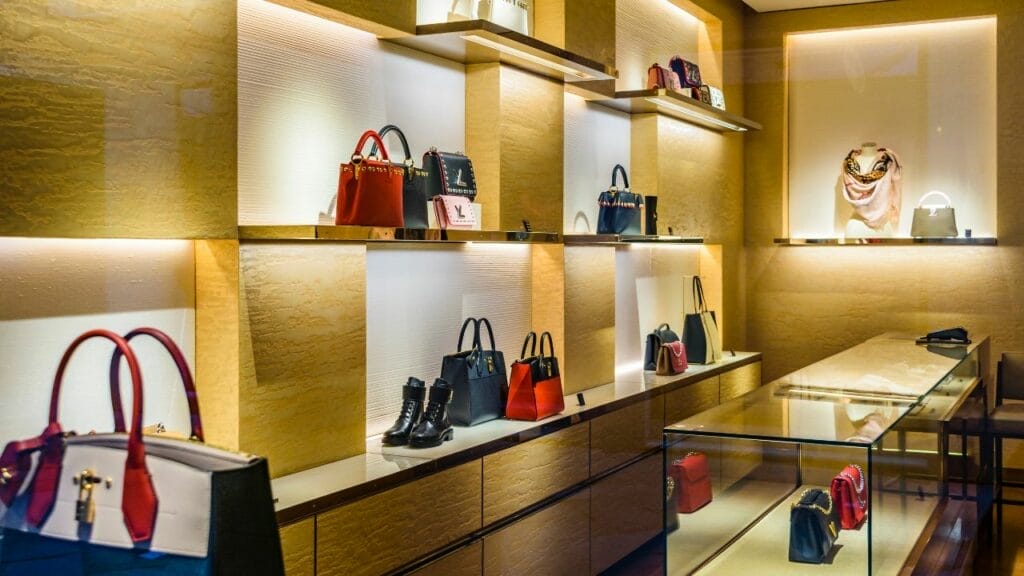The word “luxury” gets thrown around constantly these days. Marketers, social media influencers, and brand executives use the term because they want customers to believe their products are superior to the competition.
And for good reason. Brand power can lead to outsized profit generation and huge returns for stockholders due to the ability of these companies to consistently raise prices.
For example, owners of Hermès International – one of the largest luxury companies worldwide – have seen 1,730% returns since the start of 2010. That is close to 4x the returns of the S&P 500 over that same time frame.
But what makes a product luxury? Merriam-Webster defines the word luxury as:
“Something adding to pleasure or comfort but not absolutely necessary.”
This is a great place to start, but it doesn’t tell the whole story of luxury businesses. Luxury brands are much different than the average consumer product as they turn traditional business practices on their heads. Understanding these key differences is vital for anyone looking to identify and invest in the sector.

In this post, readers will learn:
- The definition of a luxury brand
- The difference between luxury and premium brands
- The (few) true luxury brands in the world
- Why luxury stocks can make good investments
The definition of a luxury brand
Understanding luxury is difficult. The criteria for a luxury brand are mainly qualitative, making it easy to disagree on whether something is or is not actually luxury. There is no line in the sand that definitively tells you whether one brand is luxury while another in its product category isn’t.
That being said, there is a lot of overlap in the strategy these companies use to build brand power. These include, but are not limited to:
- Obsession with quality (but never explicitly talking about it). Luxury products are generally made with fine materials and crafted with care. But importantly, the specifications of each product are not discussed in advertisements.
Some brands never advertise through traditional media sources and only communicate directly with customers. The strategy is to make it seem obvious the luxury goods you are buying will be high quality. It is a given, so why take the time to explain it in an advertisement?
You won’t see Ferrari advertise on TV, but you will see constant ads from Toyota, Ford, Mercedes Benz, and virtually every other carmaker.
- Heritage and storytelling. A luxury brand starts from the ability to tell the story of its heritage. This is the communication to the potential customer that serves as the main “advertisement” for its products. It is not about the actual product but the story behind it.
Look at the Hermès brand. It started all the way back in 1837 – almost 200 years ago – selling handmade horse saddles to the noblemen of Europe. Today, they can sell a handmade Birkin Bag for $20,000 partly due to its connection to this heritage of hand-built craftsmanship for the kings and queens of France. It is also why all Hermès manufacturing is still done in its home country. It wants to make customers feel like they are connected to this heritage. Otherwise, it is just another leather handbag you are buying for 10x the competition’s price. - Keeping supply well below customer demand. We are taught in Economics 101 to try and match supply and demand. Luxury brands throw the textbook out the window. These companies always keep the annual supply of products customers can buy well below the total amount customers would buy in a given year. They may even require you to hop on a long waitlist and get approved to buy a product, as Ferrari does for its cars.
A normal company would never turn away sales every year or make you go through an arduous process just for the privilege of buying something from it. Heavily restricting supply creates competition among buyers and helps build an aura around a brand, which leads to the ability to raise prices without losing any sales. - Evoking status. A luxury brand needs to show some sort of status for its users that goes beyond product quality. It is not enough to simply have a good product that lasts a long time. It needs to tell a story to other people that the customer wants them to see. Many times, this is wealth, but it could mean something else.
Environmentally-conscious brands such as Patagonia follow this strategy to evoke a status of caring about the environment when wearing the brand (although they don’t follow other tenets on this list). This allows them to sell products at higher price points. It is about more than the quality of the product you are buying; it is what it tells other people about the customer when they wear or use it. - Functionality isn’t the priority. Often, a luxury product will have the same tangible functions as its non-luxury competitors. They may be even worse.
A Ferrari will have worse handling and be more uncomfortable to ride in than the standard Mercedes car. But it was custom-built in Italy, gives the driver a sense of power on the highway, and has a shared heritage with the Ferrari racing team. That is why a Ferrari will sell for $200,000 or more while a “better” Mercedes product sells for $100,000.
I can try to price a single pencil at $1 million, but that doesn’t make it a luxury good (it will also never get sold). It is about evoking status, a heritage that tells a story of craftsmanship and restricted supply that allows luxury goods to sell at increasingly higher prices. It is also why luxury goods companies have profit margins that would make you salivate.

Telling a luxury story allows these brands to consistently raise prices, and a high price may be a part of the equation to drive a sense of exclusivity among its clientele.
But the price of a product doesn’t tell you whether it is a luxury good. Many companies will try to sell products at high prices and call themselves luxury. Almost all of them fail because they don’t have the brand heritage and story companies such as Ferrari, Louis Vuitton, and Hermès can tell their customers.
For those looking for more insights from industry experts, I recommend reading The Luxury Strategy by Jean-Noel Kapfrer. It is a fantastic book on managing and building luxury brands.
The difference between luxury and premium brands
As discussed above, many companies will advertise themselves as luxury. However, most of them do not follow a luxury strategy. They want to be associated with luxury brands and their ability to raise prices at will, but these companies (generally) cannot do so without losing customer demand.
These are what are known as premium brands. Apple, Tesla, Porsche, Nike, and Lululemon all fit into this category.
There are two key distinctions that separate premium from luxury brands:
- Premium advertises quality and functionality. Premium brands specifically tell customers about their product functionality and what makes them superior to competitors. Nike and Lululemon are easy examples. These apparel giants consistently communicate with customers about why their products are going to function better than the competition to sell them for 2x the price. People aren’t buying a $400 Gucci belt because it fits better than a basic competitor. They are buying it because of the status and story associated with the Gucci brand.
- Anyone can buy premium products. No waitlists. No purchase approvals from store managers. No purposeful supply restrictions. Anyone can go into an Apple store and buy the latest iPhone. Same with Nike shoes and Lululemon pants. Premium companies act like traditional companies by trying to match supply with customer demand as best as they can. Just think if Apple cut its supply by 90% and added ten layers of friction for anyone to buy an iPhone. Well, that is what Hermès does with its luxury handbags.

Being a premium brand is not necessarily a bad thing. Just look at the stock charts of Apple, Nike, and Tesla. But there is a clear distinction between these mass-market products and the true luxury brands of the world.
In the next section, we will list some true luxury brands and look at why they are extremely difficult to compete with.
The top luxury brands in the world and why they are unassailable
Very few brands have been following a luxury strategy for an extended period. In watches, you have Rolex, Patek Phillipe, and Audemars Piguet. With leather goods and fashion, you have Hermès, Louis Vuitton, and Chanel. In sports cars, you have Ferrari and Bentley.
What connects all these brands is the luxury strategy we discussed above. If you research these brands, you will find most, if not all of them, appeal to customers by restricting supply, telling a story about their heritage, and evoking a sense of status.
Unlike premium brands, these luxury brands are impossible to compete with if they are managed adequately. Why? Because at the end of the day, they have a time advantage that is impossible to replicate. The brands are built on connections to the past. You can’t have that if you established your brand in 1993. Or worse yet, 2023.

Other companies like RH (formerly Restoration Hardware) may explicitly state they aim to follow a luxury strategy, but we know a luxury strategy requires heritage. You can’t have heritage unless your brand is decades old. RH has ambitions to build a true luxury brand, but it will take them many decades to get to the same level as the Hermès and Ferraris of the world.
That’s what makes a well-run luxury brand unassailable. Unless you have a time machine, it is impossible to replicate its brand status among consumers.
Why luxury stocks can make good investments
Luxury stocks have been fantastic investments for two reasons we discussed above: brand durability and pricing power.
Pricing power is straightforward. Due to all the qualities of a luxury brand, these companies are able – in fact, their customers expect them – to raise prices every year. Hermès has raised the price of its flagship Kelly and Birkin bags by an average of 4% per year for the last five decades. For most years, this has outpaced inflation.
Even though it still makes its products by hand in France, Hermès has an operating margin above 40% that has consistently expanded because it can raise prices at a faster pace than its input and overhead costs.
Simply put, pricing power gives a brand such as Hermès a perpetual ability to not only grow its revenue but also expand its profit margins. This powerful combination leads to consistent earnings growth, a key driver of stock returns.

Pricing power is great, but what may be even better is the confidence investors can have in the durability of properly managed luxury brands.
As discussed above, brands such as Hermès can be impossible to compete with because most of the brand image is built on close to two centuries of heritage.
These impenetrable competitive advantages – otherwise known as a moat – mean luxury stocks will generally trade at premium earnings multiples. Hermès trades at a price-to-earnings ratio (P/E) of 53. Ferrari trades at a P/E of 49. The S&P 500 trades at around half that at a P/E of 26.
Investors may not be mistaken to own these stocks at such nosebleed multiples, either. With perpetual pricing power and decades (sometimes centuries) of brand heritage insulating them from competitors, true luxury companies have a clear line of sight to grow their earnings year after year. Maybe even forever.

Brett Schafer
Brett Schafer is an investor, host of the Chit Chat Stocks Podcast, and writer at the Motley Fool.
Related posts:
- Using Porter’s Five Forces to Determine a Company’s Moat “The key to investing is not assessing how much an industry is going to affect society, or how much it will grow, but rather determining...
- The Importance of Pricing Power in a Company “The single most important decision in evaluating a business is pricing power. If you’ve got the power to raise prices without losing business to a...
- A Deep Dive into the Inner Workings of Compounding Machines: Understanding Their Competitive Advantage A Deep Dive into the Inner Workings of Compounding Machines: Understanding Their Competitive Advantage As an investor, you always seek ways to maximize your returns...
- 8 Steps to Decoding Investment Moats “In business, I look for economic castles protected by unbreachable ‘moats.'” ~ Warren Buffett, 2007 Shareholder Letter Finding companies with competitive advantages or moats are...
